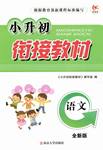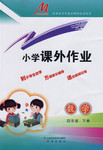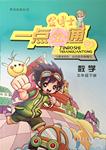题目内容
A thousand years ago Hong Kong was covered by a thick forest like the forests we now find in Malaysia and Thailand. As more and more ___36___ came to live in Hong Kong, these trees were cut down and burnt. Now there is no forest left, ___37__ there are still some areas covered with trees. We call these __38__.
Elephants, tigers, monkeys and many other animals used to live in the __39__ forests of Hong Kong, and there were even crocodiles in the ___40__ and along the coast. When people came to live in Hong Kong, the animals began to __41___ out. Early farmers grew rice and kept pigs and chickens in the valleys.
They ___42___ the trees and burnt them. They needed fires to keep themselves ___43___ in the winter, to cook their food, and to keep away from dangerous animals. Elephants quickly disappeared because there was not enough ___44___ for them. So did most of the wolves, and tigers. Monkeys, squirrels and many other animals soon died out in the same __45____.
You might think that there are ___46___ any animals in Hong Kong, except in the __47_____. You might think there can’t be any wild animals in such a __48___ place with so many cars and buildings. But there is __49_____ a good deal of countryside in Hong Kong and New Territories, and there are still about thirty-six different kinds of animals living there.
One of the most interesting of Hong Kong’s ____50___ is the barking deer. They are beautiful little creatures with rich, brown coat and a white patch under the tail. They look like deer but they are much ___51___. They are less than two feet high. The male barking deer has two small horns but the female has none. They make a __52____ rather like a dog barking.
Barking deer live in thick shrub(灌木) country and are very good at __53___. They eat grass and shrubs, mainly in the very early morning and late afternoon and evening. This is when you are most likely to see one but you will need to be very quiet and to have very ___54___eyes. In Hong Kong the barking deer has only one ___55_____ ---- man. Although it is illegal, people hunt and trap these harmless little animals. As a result there are now not many left. There are a few on Hong Kong Island but none in the New Territories.
Elephants, tigers, monkeys and many other animals used to live in the __39__ forests of Hong Kong, and there were even crocodiles in the ___40__ and along the coast. When people came to live in Hong Kong, the animals began to __41___ out. Early farmers grew rice and kept pigs and chickens in the valleys.
They ___42___ the trees and burnt them. They needed fires to keep themselves ___43___ in the winter, to cook their food, and to keep away from dangerous animals. Elephants quickly disappeared because there was not enough ___44___ for them. So did most of the wolves, and tigers. Monkeys, squirrels and many other animals soon died out in the same __45____.
You might think that there are ___46___ any animals in Hong Kong, except in the __47_____. You might think there can’t be any wild animals in such a __48___ place with so many cars and buildings. But there is __49_____ a good deal of countryside in Hong Kong and New Territories, and there are still about thirty-six different kinds of animals living there.
One of the most interesting of Hong Kong’s ____50___ is the barking deer. They are beautiful little creatures with rich, brown coat and a white patch under the tail. They look like deer but they are much ___51___. They are less than two feet high. The male barking deer has two small horns but the female has none. They make a __52____ rather like a dog barking.
Barking deer live in thick shrub(灌木) country and are very good at __53___. They eat grass and shrubs, mainly in the very early morning and late afternoon and evening. This is when you are most likely to see one but you will need to be very quiet and to have very ___54___eyes. In Hong Kong the barking deer has only one ___55_____ ---- man. Although it is illegal, people hunt and trap these harmless little animals. As a result there are now not many left. There are a few on Hong Kong Island but none in the New Territories.
| 小题1: |
|
| 小题2: |
|
| 小题3: |
|
| 小题4: |
|
| 小题5: |
|
| 小题6: |
|
| 小题7: |
|
| 小题8: |
|
| 小题9: |
|
| 小题10: |
|
| 小题11: |
|
| 小题12: |
|
| 小题13: |
|
| 小题14: |
|
| 小题15: |
|
| 小题16: |
|
| 小题17: |
|
| 小题18: |
|
| 小题19: |
|
| 小题20: |
|
小题1:A
小题2:C
小题3:D
小题4:B
小题5:A
小题6:A
小题7:D
小题8:C
小题9:B
小题10:A
小题11:D
小题12:A
小题13:B
小题14:C
小题15:A
小题16:C
小题17:A
小题18:D
小题19:B
小题20:C
这则短文通过讲述香港的变化来告诫人们要保护森林、爱护动物。
小题1:考查名词。结合下文When people came to live in Hong Kong可知答案。随着越来越多的人(people)到香港居住。此处泛指人,用people。
小题2:考查连词。前后两句话之间是转折关系,故用though。
小题3:考查名词。these指代前文的areas covered with trees,故我们应称之为树林woods。
小题4:考查形容词。人们来香港后砍伐焚烧树林,而在此之前,树林是茂密thick的。
小题5:考查名词。crocodiles(鳄鱼)自然是生活在水里(rivers)。
小题6:考查动词。由于人多了,动物就变少了。die out 绝种,死光。
小题7:考查动词。砍伐焚烧树林。cut down砍倒。
小题8:考查形容词。他们需要火来在冬天取暖、烧饭、驱赶动物。
小题9:考查名词。树木减少,造成大象食物不足。
小题10:考查名词。in the same way以同样的方式。
小题11:考查副词。原先有很多的动物,现在不在(no longer)有了。
小题12:考查名词。除了动物园其它地方就没有动物了。
小题13:考查形容词。结合后面的修饰物with so many cars and buildings可知香港是个繁忙的地方。
小题14:考查副词。与前面的can’t构成转折关系,此处应选表示肯定意义的词。
小题15:考查名词。与前面的any wild animals呼应。
小题16:考查形容词。结合下文They are less than two feet high可知其小。
小题17:考查名词。结合下文a dog barking可知此处指的是他们发出的声音。
小题18:考查动词。结合下文you will need to be very quiet可知这种动物很警觉,善于躲藏。
小题19:考查形容词。sharp eyes敏锐的眼睛。sharp adj. 敏锐的; 锋利的。
小题20:考查名词。结合下文可知人(people)是这种动物的唯一敌人。
小题1:考查名词。结合下文When people came to live in Hong Kong可知答案。随着越来越多的人(people)到香港居住。此处泛指人,用people。
小题2:考查连词。前后两句话之间是转折关系,故用though。
小题3:考查名词。these指代前文的areas covered with trees,故我们应称之为树林woods。
小题4:考查形容词。人们来香港后砍伐焚烧树林,而在此之前,树林是茂密thick的。
小题5:考查名词。crocodiles(鳄鱼)自然是生活在水里(rivers)。
小题6:考查动词。由于人多了,动物就变少了。die out 绝种,死光。
小题7:考查动词。砍伐焚烧树林。cut down砍倒。
小题8:考查形容词。他们需要火来在冬天取暖、烧饭、驱赶动物。
小题9:考查名词。树木减少,造成大象食物不足。
小题10:考查名词。in the same way以同样的方式。
小题11:考查副词。原先有很多的动物,现在不在(no longer)有了。
小题12:考查名词。除了动物园其它地方就没有动物了。
小题13:考查形容词。结合后面的修饰物with so many cars and buildings可知香港是个繁忙的地方。
小题14:考查副词。与前面的can’t构成转折关系,此处应选表示肯定意义的词。
小题15:考查名词。与前面的any wild animals呼应。
小题16:考查形容词。结合下文They are less than two feet high可知其小。
小题17:考查名词。结合下文a dog barking可知此处指的是他们发出的声音。
小题18:考查动词。结合下文you will need to be very quiet可知这种动物很警觉,善于躲藏。
小题19:考查形容词。sharp eyes敏锐的眼睛。sharp adj. 敏锐的; 锋利的。
小题20:考查名词。结合下文可知人(people)是这种动物的唯一敌人。

练习册系列答案
 学而优衔接教材南京大学出版社系列答案
学而优衔接教材南京大学出版社系列答案 小学课堂作业系列答案
小学课堂作业系列答案 金博士一点全通系列答案
金博士一点全通系列答案
相关题目
